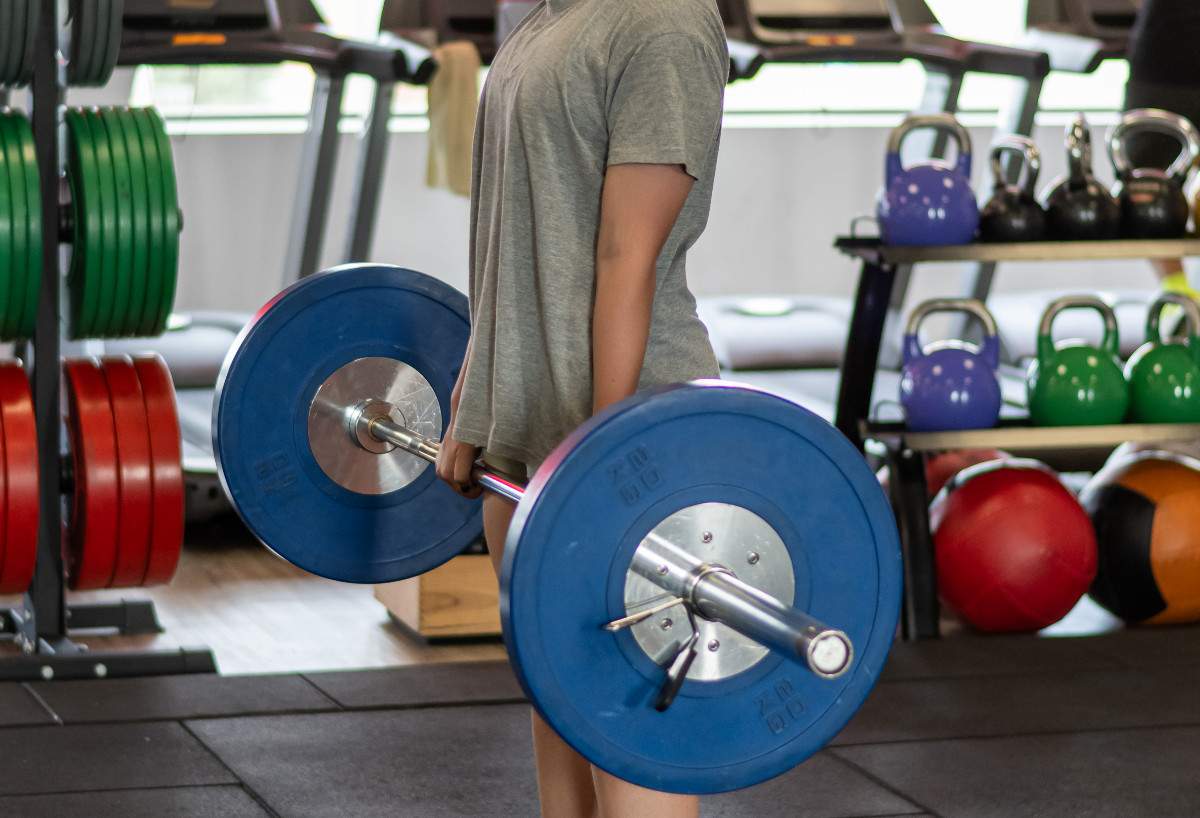You walk into the gym, head straight to the weights section, and skip the treadmills completely. You’re not alone. Thousands of people focus purely on strength training and wonder if they’re missing out by avoiding cardio. The short answer is no, you won’t fall apart without cardio, but your body will develop differently than someone who mixes both.
What happens if you only lift weights and no cardio? Your muscles will grow stronger and bigger, but your cardiovascular fitness will lag behind. You’ll build impressive strength and muscle mass, but activities like running up stairs or playing sport might leave you breathless. Your heart won’t adapt the same way it does with cardio training, though lifting weights does provide some cardiovascular benefits.
Will Your Heart Health Suffer Without Cardio?
Your heart will still benefit from weight training, just differently than cardio. Research shows that resistance training reduces blood pressure and improves heart function. A 2019 study found that people who only did strength training had similar cardiovascular benefits to those who only did cardio.
Weight training forces your heart to work harder during sets, especially when you’re lifting heavy or doing compound movements like squats and deadlifts. Your heart rate increases, blood pumps faster, and your cardiovascular system adapts. However, cardio builds endurance in your heart muscle in ways that weights alone cannot match.
The key difference is this: weights make your heart stronger for short bursts, while cardio trains it for sustained effort. Both matter, but you can maintain decent heart health with weights alone if you train consistently.
Can You Lose Fat With Just Weight Training?
Yes, you can lose fat by only lifting weights. Muscle tissue burns more calories than fat tissue, even when you’re sitting on the couch. When you build muscle through weight training, you increase your resting metabolic rate, meaning you burn more calories throughout the entire day.
A 2012 study in the Journal of Applied Physiology found that resistance training alone led to significant fat loss in participants. The participants didn’t do any cardio but still reduced body fat percentage through consistent weight training.
Here’s how it works:
- Weight training creates micro-tears in muscle fibres
- Your body burns calories repairing these tears for up to 48 hours after training
- New muscle tissue increases your daily calorie burn
- Higher calorie burn leads to fat loss when combined with proper nutrition
Cardio burns more calories during the actual workout, but weight training keeps burning calories long after you leave the gym. For fat loss, both work, but weights give you the added benefit of building muscle while you lose fat.
9 Steps To Shed 5-10kg In 6 Weeks
Includes an exercise plan, nutrition plan, and 20+ tips and tricks.
Download FreeWhat Happens to Your Bone Density?
Your bones will get stronger with weight training alone. Lifting weights is one of the best things you can do for bone health. When you lift heavy objects, your bones respond by becoming denser and stronger.
Research from the Journal of Bone and Mineral Research shows that resistance training increases bone mineral density more effectively than cardio. This is crucial as you age because bone density naturally decreases, leading to conditions like osteoporosis.
Weight-bearing exercises like squats, deadlifts, and overhead presses force your bones to adapt to stress. Your body responds by laying down new bone tissue, making your skeleton more resilient. Cardio doesn’t provide this same bone-building stimulus because it doesn’t load your bones with enough resistance.
Will You Lose Endurance and Stamina?
Yes, your endurance will decline if you only lift weights. Your body adapts specifically to the demands you place on it. If you never train your cardiovascular system for sustained effort, it won’t develop that capacity.
You might notice this when:
- Climbing multiple flights of stairs leaves you winded
- Playing with kids or pets for extended periods becomes exhausting
- Walking long distances feels harder than it should
- Recovery between weight training sets takes longer
Your muscles might be strong enough to lift heavy objects, but your cardiovascular system won’t efficiently deliver oxygen to those muscles during prolonged activity. This is why powerlifters and bodybuilders often struggle with activities that require sustained effort, even though they’re incredibly strong.
How Does Your Body Composition Change?
Your body will become more muscular and defined with weight training alone. You’ll build muscle mass, increase strength, and can achieve a lean physique without ever touching a treadmill.
Muscle growth happens through progressive overload. When you consistently challenge your muscles with heavier weights or more repetitions, they adapt by growing larger and stronger. This process, called hypertrophy, reshapes your body composition by increasing muscle mass and decreasing fat percentage.
The visible results include:
- Broader shoulders and chest
- Defined arms and legs
- Stronger, more prominent back muscles
- Improved posture from stronger core muscles
Many people achieve their ideal body composition through weight training alone. The key is consistent training, progressive overload, and proper nutrition to support muscle growth.
What About Your Metabolism?
Your metabolism will increase significantly with weight training. Every kilogram of muscle you add burns approximately 50-100 extra calories per day at rest. This might not sound like much, but it adds up quickly.
If you build 5 kilograms of muscle through consistent weight training, you could burn an additional 250-500 calories per day without changing anything else. Over a year, that’s equivalent to losing 13-26 kilograms of fat, assuming your diet stays the same.
This metabolic boost is permanent as long as you maintain your muscle mass. Unlike cardio, which only burns calories during the activity, weight training creates a lasting change in your body’s energy requirements.
Can You Stay Healthy Long-Term?
You can maintain good health with weight training alone, but adding some cardio provides additional benefits. Weight training covers many health markers including strength, bone density, muscle mass, and metabolic health. However, specific cardiovascular adaptations only come from cardio training.
The World Health Organization recommends adults get 150-300 minutes of moderate-intensity aerobic activity per week, or 75-150 minutes of vigorous-intensity activity. These guidelines exist because cardio provides unique benefits for heart health, lung capacity, and endurance.
That said, if you genuinely hate cardio, you won’t ruin your health by focusing on weights. Many people live healthy lives prioritising strength training. The most important factor is consistency. A weight training program you’ll stick to is better than a mixed program you’ll quit.
Does Weight Training Provide Any Cardio Benefits?
Yes, weight training does provide cardiovascular benefits, especially when structured properly. Circuit training, supersets, and short rest periods between sets all elevate your heart rate and challenge your cardiovascular system.
Research from the American College of Sports Medicine shows that resistance training improves cardiovascular health markers including:
- Lower resting heart rate
- Reduced blood pressure
- Improved cholesterol levels
- Better blood sugar control
High-intensity weight training sessions can push your heart rate to 70-85% of maximum, similar to moderate cardio. The difference is that these elevated heart rates come in shorter bursts rather than sustained periods.
What’s the Ideal Training Split?
If you’re only doing weights, aim for 3-5 sessions per week targeting all major muscle groups. A balanced program ensures you develop strength evenly across your body and reduces injury risk.
Here’s an effective weekly split:
Option 1: Full Body (3 days per week)
- Monday: Full body workout
- Wednesday: Full body workout
- Friday: Full body workout
Option 2: Upper/Lower Split (4 days per week)
- Monday: Upper body
- Tuesday: Lower body
- Thursday: Upper body
- Friday: Lower body
Option 3: Push/Pull/Legs (6 days per week)
- Monday: Push (chest, shoulders, triceps)
- Tuesday: Pull (back, biceps)
- Wednesday: Legs
- Thursday: Push
- Friday: Pull
- Saturday: Legs
Each session should last 45-90 minutes and include compound movements like squats, deadlifts, bench press, and rows. These exercises work multiple muscle groups simultaneously and provide the most benefit for your time.
How Should You Structure Your Workouts?
Structure your weight training sessions to maximise both strength gains and cardiovascular benefits. Start with compound movements when you’re fresh, then move to isolation exercises.
A typical session should follow this structure:
- Warm-up (5-10 minutes of light movement)
- Compound exercises (3-4 exercises, 3-4 sets each)
- Isolation exercises (2-3 exercises, 3 sets each)
- Cool-down (5-10 minutes of stretching)
Keep rest periods between 60-90 seconds for muscle building, or 30-45 seconds if you want more cardiovascular challenge. Shorter rest periods keep your heart rate elevated throughout the session, providing additional cardio benefits.
What About Recovery and Rest Days?
Your muscles need 48-72 hours to recover after intense weight training. This recovery period is when your muscles actually grow stronger. Training the same muscle groups without adequate rest leads to overtraining, injury, and poor results.
Plan your training week to allow proper recovery:
- Never train the same muscle group on consecutive days
- Take at least one complete rest day per week
- Listen to your body and take extra rest if needed
- Prioritise sleep (7-9 hours per night) for optimal recovery
Recovery isn’t just about avoiding the gym. It includes proper nutrition, adequate sleep, stress management, and active recovery like walking or stretching. These factors determine how well your body adapts to training.
Frequently Asked Questions
Is it OK to just lift weights and not do cardio?
Yes, it’s perfectly fine to only lift weights. You’ll build muscle, increase strength, and can maintain good health. However, your cardiovascular endurance will be lower than someone who includes cardio in their routine.
Will I gain weight if I only lift weights?
You might gain weight initially as you build muscle, but this is healthy weight. Muscle is denser than fat, so you might weigh more while looking leaner. Your body composition matters more than the number on the scale.
How long does it take to see results from weight training?
Most people notice strength increases within 2-3 weeks. Visible muscle growth typically appears after 6-8 weeks of consistent training. Significant body transformation takes 3-6 months of dedicated effort.
Can I build muscle without eating more?
Building muscle requires adequate protein and calories. You need approximately 1.6-2.2 grams of protein per kilogram of body weight daily. If you’re not eating enough, your body won’t have the resources to build new muscle tissue.
Should I lift heavy or light weights?
Both heavy and light weights build muscle when taken close to failure. Heavy weights (6-8 reps) build maximum strength. Moderate weights (8-12 reps) optimise muscle growth. Light weights (12-15+ reps) improve muscular endurance. Include all rep ranges for best results.
How much does a gym membership cost in Australia?
Budget gyms cost $15-30 per week, mid-range gyms cost $30-50 per week, and premium gyms cost $50-100+ per week. Many gyms offer discounts for longer commitments or off-peak memberships.
The Bottom Line
Lifting weights without cardio will make you stronger, build muscle, and can keep you healthy. Your cardiovascular fitness won’t match someone who does cardio, but you’ll develop impressive strength and physique. The best program is one you’ll actually stick to consistently. If you love weights and hate cardio, focus on what you enjoy. You can always add cardio later if you feel you need it.

